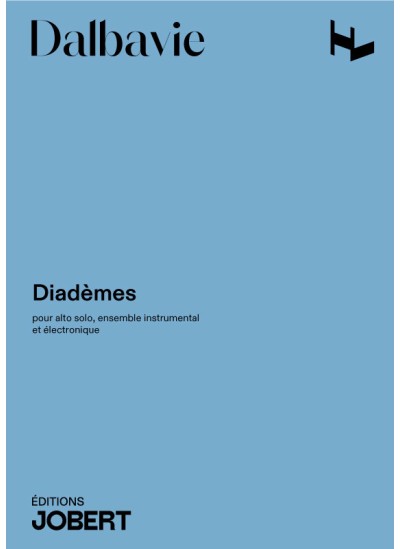
Diadèmes
Alto and orchestra
Composer born in 1961. After studying at the Paris Conservatory (1980-86) where he received several first prizes, he spent five years as part of the musical research department at IRCAM from 1987 to 1988, he studied conducting with Pierre Boulez. He is currently professor of orchestration at the Paris Conservatory, and composer in residence with the Cleveland Orchestra.
Starting in 1982, he and other composers of his generation became interested in the potentials of spectral music, particularly those offered by timbre and processing. He enhanced these techniques with polyphonic and rhythmic techniques (speed, metrics...), also developing formal principles of recurrence, integrating heterogeneous and spatial phenomena through his usage of electronics, as well as employing music and acoustic computer programs.
If, for him, the eighties were devoted to timbre and colour (Miroirs transparents, Diadèmes...), the nineties would be devoted to space and location. The composer feels strongly about applying the concept of work in situ to musical creation, thus demonstrating the possibilities offered by the spacialisation generated by orchestral composition. In Seuils, the electronic equipment is installed around the audience and the poetic text that is used makes reference to the space in which it intervenes. The use of baroque instruments links the Concertino with a 17th century piece (Curtain Tune by M. Locke). L'Offertoire for men's choir and symphony orchestra suggests virtual spaces simulated by the choral writing. In Concerto pour violon, one section of the orchestra is installed around the audience, breaking down the standard frontal concert orientation, thus redefining the very idea of a concerto. Lastly, in Non-Lieu composed with writer Guy Lelong, the stage is completely empty and the 4 women's choirs, as well as the instrumental ensemble, are distributed in the hall around the audience.
The music of Marc-André Dalbavie is published by Editions Jobert.
Composer born in 1961. After studying at the Paris Conservatory (1980-86) where he received several first prizes, he spent five years as part of the musical research department at IRCAM from 1987 to 1988, he studied conducting with Pierre Boulez. He is currently professor of orchestration at the Paris Conservatory, and composer in residence with the Cleveland Orchestra.
Starting in 1982, he and other composers of his generation became interested in the potentials of spectral music,...